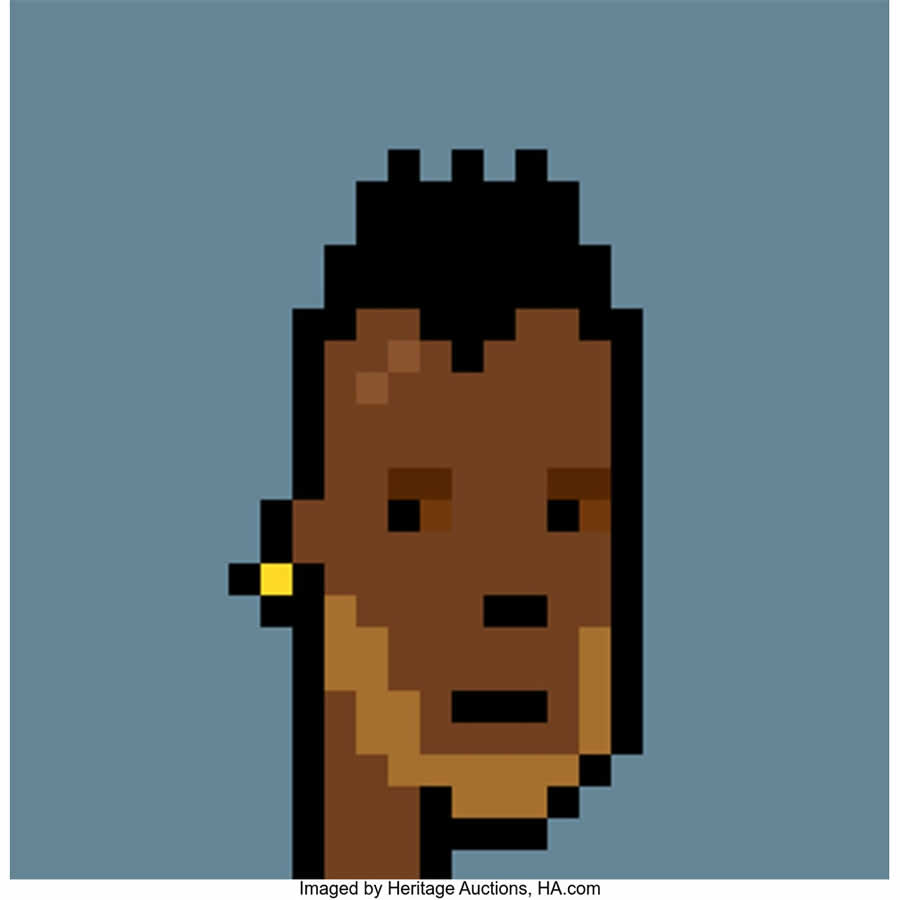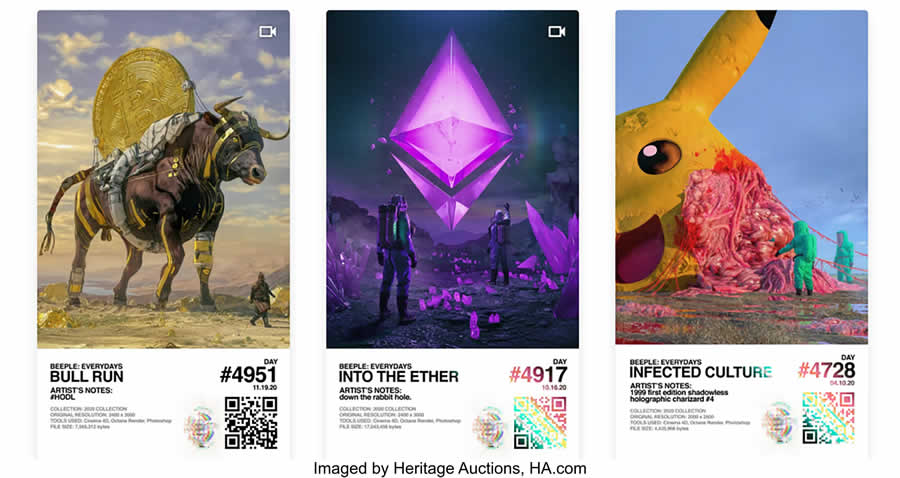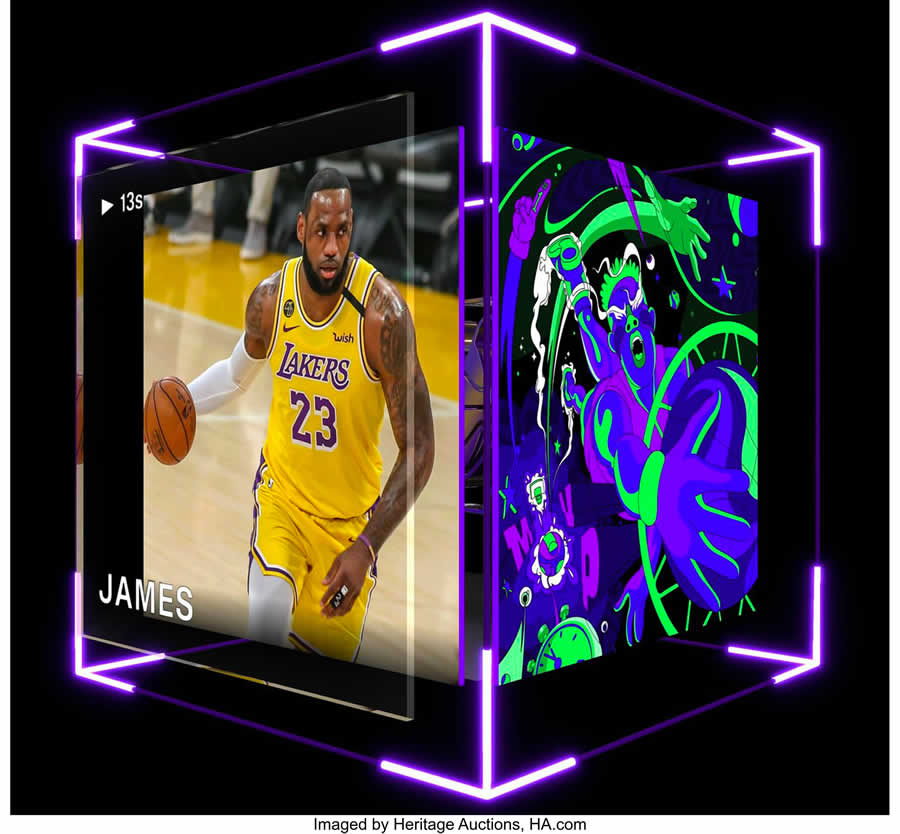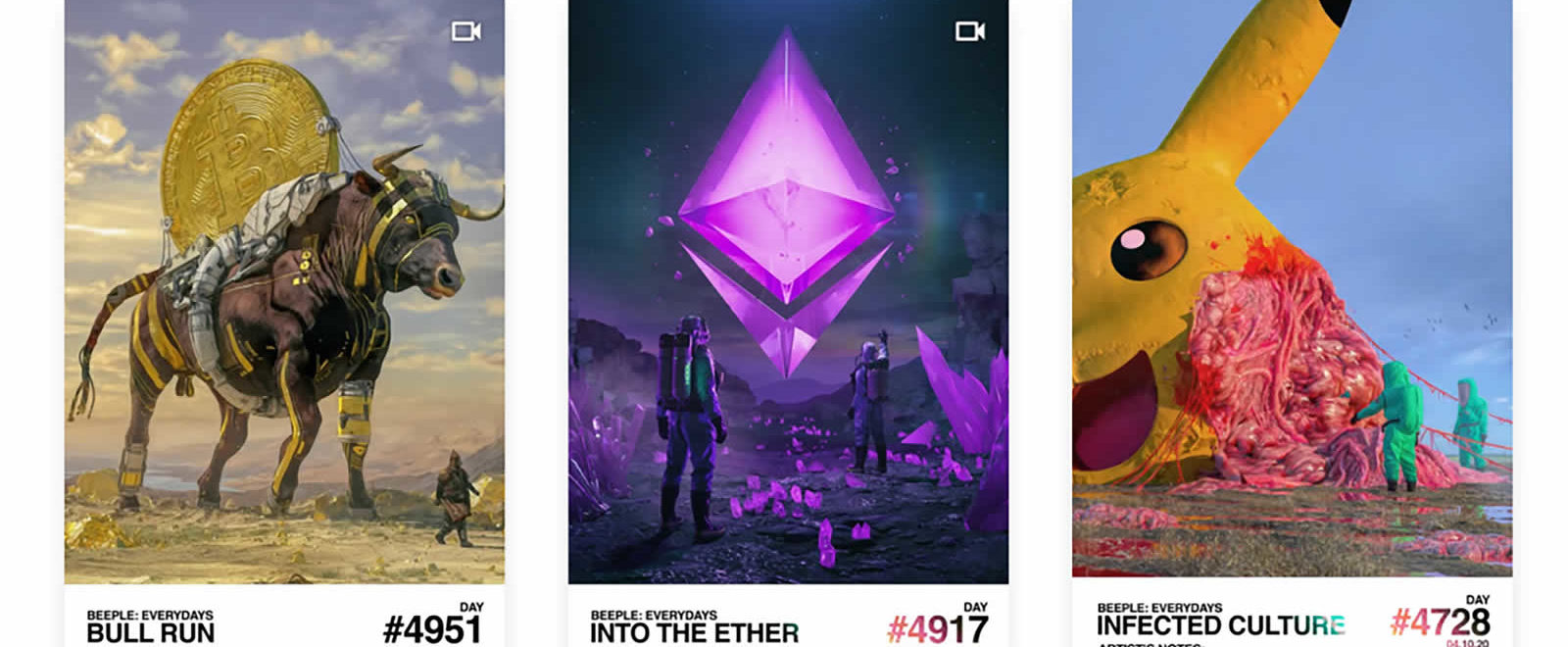A LOOK AT THE PAST, PRESENT AND FUTURE OF THE NON-FUNGIBLE TOKEN PHENOMENON
By Rhonda Reinhart
Enlarge

Although the world’s first non-fungible token was born in 2014 — thanks to the creative genius of digital artist Kevin McCoy — it wasn’t until 2021 that NFTs took off on the mainstream stage. In March, artist Mike Winkelmann, aka Beeple, made headlines when his NFT collection Everydays: The First 5000 Days sold at auction for nearly $70 million, making him one of the most famous (and expensive) living artists in the world.
MORE ABOUT NFTs
And Beeple isn’t the only digital artist excelling in the NFT arena. A handful of other artists are also earning top dollar for their work, including Larva Labs’ CryptoPunks, a series of 10,000 unique collectible NFT characters, one of which sold at Heritage Auctions in October for $362,500.
“Probably the most important project by far in terms of influence is the CryptoPunks,” says Taylor Curry, Heritage Auctions’ Consignment Director of Modern & Contemporary Art. “In general, that project is viewed as the first NFT project to get mainstream recognition. When they debuted in 2017, they were given away for free. Nobody thought they were worth anything.”
So while it was easy way back in the twenty-teens to write off NFTs as a passing fad, today’s marketplace is proof that serious collectors are getting more and more involved in this brave new world. “In 2021, we saw a gold rush phase from January to September, and now the market is maturing quite a lot,” Curry says. “There’s a lot of noise in the market, but the hype is dying down, and people are actually realizing that it’s a serious medium for artists to explore.”
And it’s not just the art industry that’s experiencing NFT mania. The medium is thriving in the world of sports collectibles, too. But even with all of this mainstream success, many people are still left wondering what it all means. So we’ve compiled some answers to some of the most frequently asked NFT questions.
Enlarge

1. What Is an NFT?
An NFT is a one-of-a-kind digital asset representing a variety of internet goods, from art to music to email messages to sports collectibles. Instead of receiving physical products, buyers of NFTs receive digital files that prove ownership of the virtual object.
2. So Why Couldn’t Someone Else Just Download the Image?
NFTs are linked to the blockchain, a ledger where transactions of cryptocurrencies such as Bitcoin are recorded. “When you buy an NFT, you get a digital token that is stored on the blockchain and that you can automatically verify,” Curry says. “You can’t verify unique ownership of a JPEG.” Recently, however, artists such as Beeple have started including physical tokens with their NFTs. Similar to an iPad, these physical representations offer collectors a way to display their purchase in their home or office.
3. Why Are Artists Moving Toward NFTs?
“For one thing, it’s literally direct to consumer. There’s no middleman,” Curry says. “Everything is transparent on the blockchain. You can see who bought it, how they bought it, and how much they paid for it. There’s also the beauty of resale rights, which is something that every artist wants, but it doesn’t exist in the U.S. For example, because NFTs are on the blockchain, you can build into the smart contracts to pay the original creator a percentage when the work resells. For an artist, that’s unheard of unless you’re in Europe or the U.K.”
4. Who Is Collecting NFTs?
Not surprisingly, NFT collectors tend to skew younger than traditional art collectors. “There’s a generational divide between painting collectors and NFT collectors,” Curry says. “If you’re a millennial or younger, chances are you would rather collect a digital good and something that you can easily display on your phone or on a screen. The other thing to think about is that there’s a large percentage of the millennial population that grew up playing video games, and this is something that they easily understand because with video games, you can buy, sell and trade digital goods such as skins or in-game items.”
Enlarge

5. Besides the Art World, Where Else Are NFTs Gaining Ground?
While art has gotten most of the attention in the NFT space, the medium has been booming in the sports memorabilia business, too. NBA Top Shot, which hit the market in late 2020, has seen a rapid rise in popularity over the past year. Known as “moments,” these digital collectibles are video highlight clips packaged as NFTs that basketball fans can buy and sell like trading cards.
Mike Provenzale, Heritage Auctions’ Production Manager of Sports and Memorabilia, says NBA Top Shot experienced an “absolute explosion” when the collectibles first took off, seeing huge results in their marketplace and in the auction world, too. Some moments have even sold for six-figure sums. “Now hundreds of athletes are producing their own NFTs to stake a claim in the space,” Provenzale says. “While it can seem like the Wild West as far as what is valuable, that’s one of the most interesting parts about it. They have created an influx of creativity in the collectible market and allowed the athletes a means to market themselves that wasn’t possible before.”
The concept is catching on in other sports as well. In September, the NFL announced that it is set to launch its own NFT collectibles marketplace, in partnership with the same creator responsible for NBA Top Shot.
While only time will tell where the NFT market will head next, Curry foresees continued interest in the medium, especially as people spend more time on their phones and more time engaging with technology. “You could collect NFTs, or you could have the actual physical pieces,” he says. “For a lot of the newer generation, people would rather collect digital goods.”
Learn how to buy and sell an NFT at Heritage Auctions.
 RHONDA REINHART is editor of Intelligent Collector.
RHONDA REINHART is editor of Intelligent Collector.

